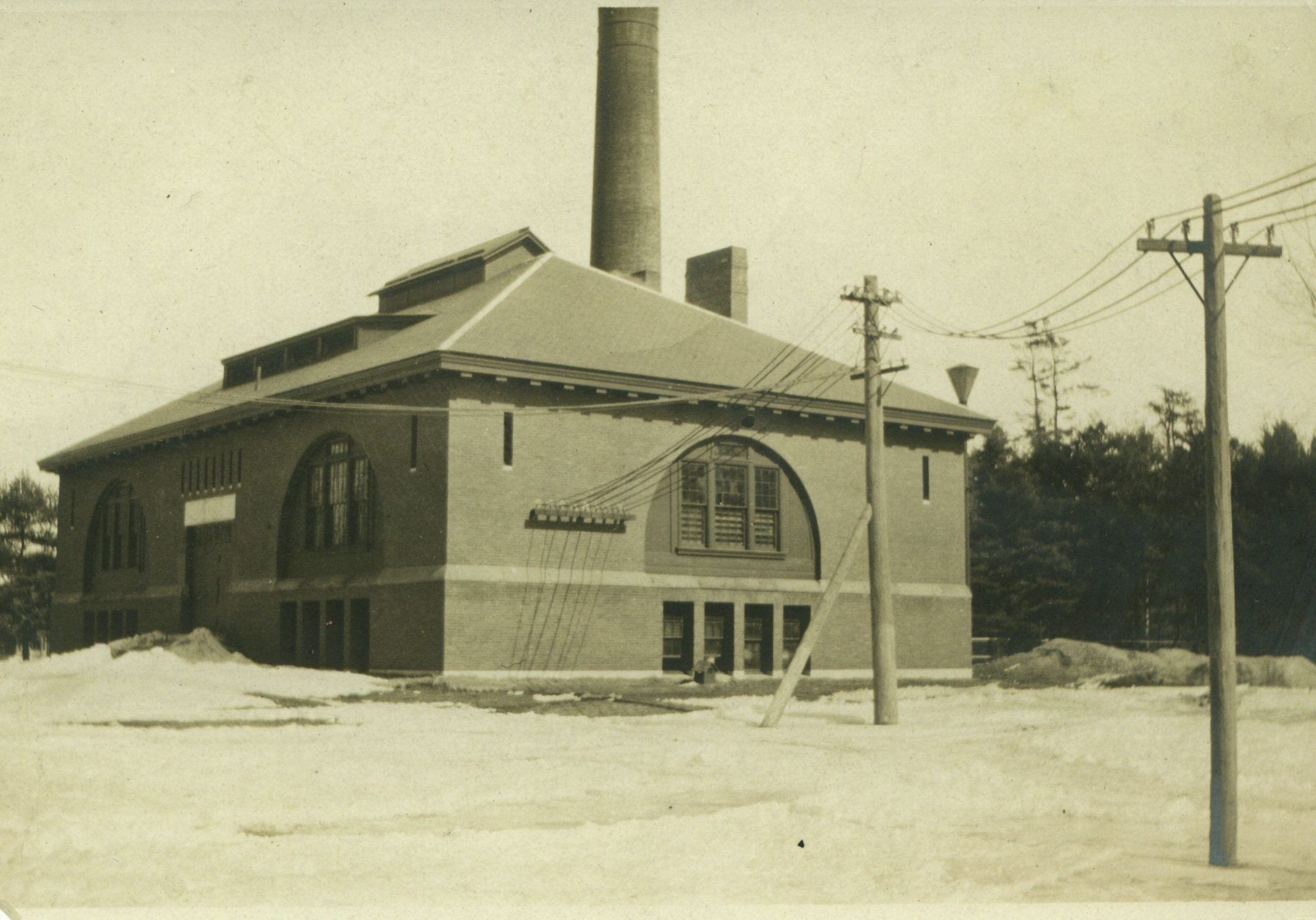“Sustainable Bowdoin 2042” takes small steps on the path towards a clean energy future
October 24, 2025
 Courtesy of the George J. Mitchell Department of Special Collections and Archives
Courtesy of the George J. Mitchell Department of Special Collections and Archives
an initiative to achieve net-zero carbon emissions. By the year 2042, the College plans to transition away from relying on the central heating plant, which accounts for 75 percent of Bowdoin’s annual carbon emissions from natural gas energy. Since the plan was announced, the College has taken small steps towards the goal ahead of the final campus plan, which is currently in development and will allow for more substantial changes.
“Sustainable Bowdoin 2042” invests more than $100 million in a commitment to run entirely on carbon-free clean energy, from the heating, ventilation and cooling systems to transportation. The College’s Sustainability Implementation Committee oversees the project and gathers input from students, faculty and staff.
Bowdoin Director of Sustainability Keisha Payson said she hopes students will recognize the importance of the initiative and leave Bowdoin with increased awareness surrounding energy conservation.
“Being an institute of higher education, it’s a great educational opportunity to demonstrate to the students that we can all be a part of the solution,” Payson said. “[Focusing on the common good] is part of who we are and what we do. I see that focusing on a climate plan is focusing on the common good.”
“Sustainable Bowdoin 2042” is split into three key scopes and two main phases. Each scope categorizes a different source of emissions. Scope 1 focuses on emissions associated with the combustion of fuels on campus, in campus-owned vehicles and in fugitive refrigerants, or gases that accidentally leak from HVAC systems and other equipment; scope 2 focuses on the purchase of electricity; scope 3 focuses on activities not directly owned or controlled by the College, such as waste management and employee commuting.
The two phases provide a timeline for implementing the plan. Phase 1 will rebuild the infrastructure that connects many buildings to the central steam plant by 2037. The new system will use a low-temperature hot water system, which uses about 30 percent less energy than steam from the heating plant. The College will also conserve energy by updating the envelopes of older buildings, which are the barriers that separate the interior and exterior environments and include the structures’ windows, doors, insulation and mechanical systems.
The second phase, slated for 2038 to 2042, aims to completely eliminate Scope 1 emissions without purchasing carbon offsets. In addition, the College will repurpose the central heating plant into a 100 percent renewable energy station and a single generator to support the entire campus during power outages.
Eighty-eight percent of the College’s electricity needs are generated by the solar panels on top of Farley Field House and Watson Arena and on the former Naval Air Station in Brunswick. Upon completion of Phase 2, the College will source 100 percent of its electrical usage from new solar photovoltaic projects in Maine. Several campus buildings are already running on solar electricity, including Mills Hall, Sills Hall, the John and Lile Gibbons Center for Arctic Studies and Park Row apartments.
Since the announcement of “Sustainable Bowdoin 2042,” the College has made meaningful efforts towards a clean energy transformation.
According to Payson, the Sustainability Implementation Committee needs to receive the final campus master plan in order for the rebuilding process of Phase 1 to begin.
Senior Vice President for Finance and Administration and Treasurer Matt Orlando wrote in an email to the Orient that the campus plan is still a work in progress, with no current date set for its finalization.
“While the proposed campus plan is still in development, sustainability is a key underlying consideration,” Orlando wrote in an email to the Orient. “Any renovation or new building would be consistent with our ‘Sustainable Bowdoin 2042’ plan in terms of design standards and progress toward campus decarbonization.”
Payson said that the renovation of Sills Hall, completed this year, is an example of the plan in action: The new building features a more secure envelope and operates with a low-temperature hot water system.
“[While] we’ve been waiting for the campus master plan, we’ve been focusing on our vehicles,” Payson said. “The nine vehicles that we have purchased are fully electric and [we have] added [electric vehicle] charging stations on campus. We now have 20 plugs available for the general public, faculty, staff and students for charging electric vehicles.”
The College vehicles include a mail truck, dining delivery truck, warehouse delivery truck, the security vehicles and vans for certified students to borrow, among others.
From the beginning, “Sustainable Bowdoin 2042” has involved students and faculty through the creation of new courses, new topics on the syllabi and opportunities to learn outside the classroom.
Naomi Lopez ’26 is a sustainability coordinator and lead of the Climate Action Network team through Sustainable Bowdoin. Through these roles, she serves as a liaison between the Office of Sustainability and the student body to promote opportunities for students to engage with climate action and to help advance Bowdoin’s sustainability goals.
Lopez said she sees students engaging in sustainability through their individual actions, such as turning the lights off when leaving the room and recycling. She said these small steps can create a larger impact if sustained over time.
“A big focus of the [‘Sustainable Bowdoin 2042’] plan is on changing Bowdoin’s infrastructure and energy systems to get us to net zero,” Lopez said. “I think the plan is also part of a larger initiative that’s not only focused on changing physical infrastructure but also changing habits to create a larger culture of environmental stewardship and pro-environmental behavior…. In order to facilitate that culture shift, that really comes from the students themselves and the community that we have here at Bowdoin.”

Comments
Before submitting a comment, please review our comment policy. Some key points from the policy: